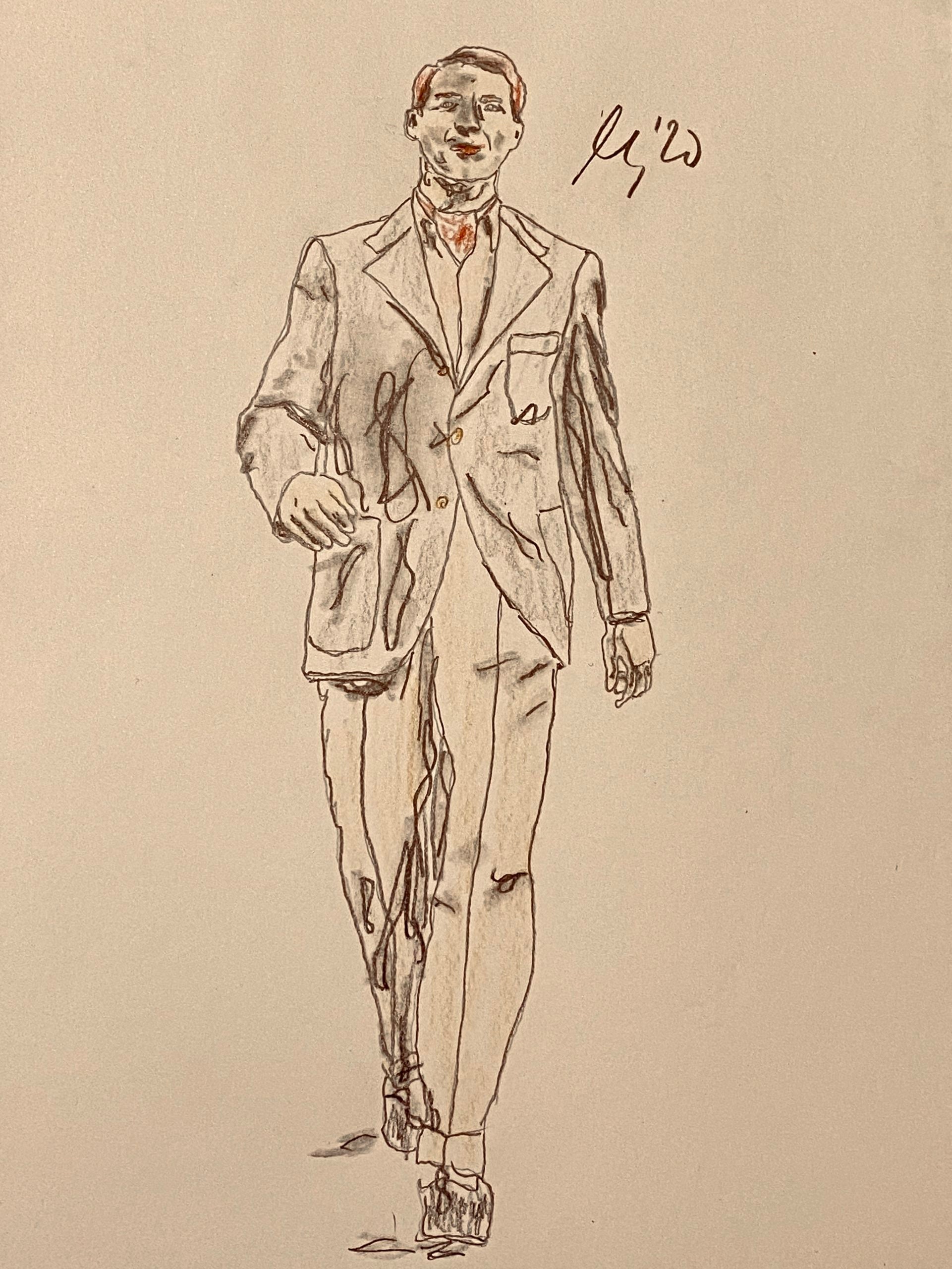
Silver Screen Revisited – John Robie (To Catch a Thief, 1955)
by admin
·
Alfred Hitchcock’s 1955 film To Catch a Thief will make you want to go to the French Riviera where the sun is always shining and the champagne is always perfectly chilled. However, the film is not only worth seeing to stir such musings, it also presents a nonchalantly elegant wardrobe seldom seen in public today.
Cary Grant, in the lead role as John Robie, plays a former jewel thief suspected of stealing diamonds from wealthy ladies’ hotel rooms in Nice. Since the police is after him and he is convinced of his innocence, he sets out to find the culprits himself. But that is only in passing – most of you have probably seen the film. For everyone else, I don’t want to spoil the fun.
Much more striking than the rather soporific plot (trust me, it’s hard to believe that this is actually a Hitchcock) is the excellent clothing. Three of Robie’s outfits stand out: At the very beginning, he is wearing very high-fitting, medium-grey trousers with double pleats and a cross-striped, blue-grey sweater, which is quite slim and short – ideal for high-waisted trousers. In addition, a red neckerchief with large white polka dots, light brown moccasins, beige socks and perfectly pomaded hair.
In this outfit, Robie escapes half of Nice’s police department, which is trying to get a hold of him to investigate the most recent thefts. The commissioners are already in his living room when he asks for a little patience: Before they take him to the station, he would like to put on something more appropriate. The commissioners agree and Robie uses the time gained wisely. The understandable desire for a more formal outfit was, of course, a mere pretence – he barricades the bedroom and escapes through the window. Evidently, the film repeatedly compares Robie to a black cat.
While still on the run, Robie is involved in a small incident – our protagonist ends up in a whole bunch of flowers. Once he has escaped the situation, it seems as if he has changed his outfit. On closer inspection though, it becomes clear that he has simply turned the soiled sweater inside out and changed the neckerchief. This creates a completely different look. The sweater now appears to be light grey and in some scenes, it even looks pale turquoise – perhaps due to the bright blue sky.
By the way: When an old acquaintance asks Robie why he became a jewel thief in the first place, he replies: “To live better. To own things I couldn’t afford. To acquire this good taste which you now enjoy and which I should be very reluctant to give up. […] And for what it’s worth, I didn’t steal from people who would go hungry.“ Robie and Robin Hood might have more in common than the phonetic similarity of their first names.
His ‘good taste’ becomes even more apparent in Robie’s next outfit: evening dress, a black dinner jacket, shawl collar, single-button closure, diamond studs (there they are, the old vices!) and oxfords polished to a high gloss. Elegance in its purest form – hardly worth mentioning.
In my opinion, Robie’s third outfit is the most exciting. After a short swim in the sea, Robie changes from his swimming trunks to a wonderful combination. He wears a medium grey blazer with golden buttons in a 3-roll-2-arrangement, light beige pants, a rather loose white shirt and a midnight blue neckerchief with small white polka dots. Accompanied by cognac-coloured, slightly reddish loafers with tassels. This look, however, attains perfection when Robie joins his latest acquiantance, Frances – superbly portrayed by Grace Kelly – in her Sunbeam Alpine Roadster. His blazer reflects the turquoise paint of the car and the beige leather seats harmonise perfectly with his loafers, which he presses tightly into the footwell during the wild ride through the serpentines.
In the end, we get to know who is responsible for the thefts but one question remains: Is this much ‘good taste’ appealing enough to give up your career in the office for good?